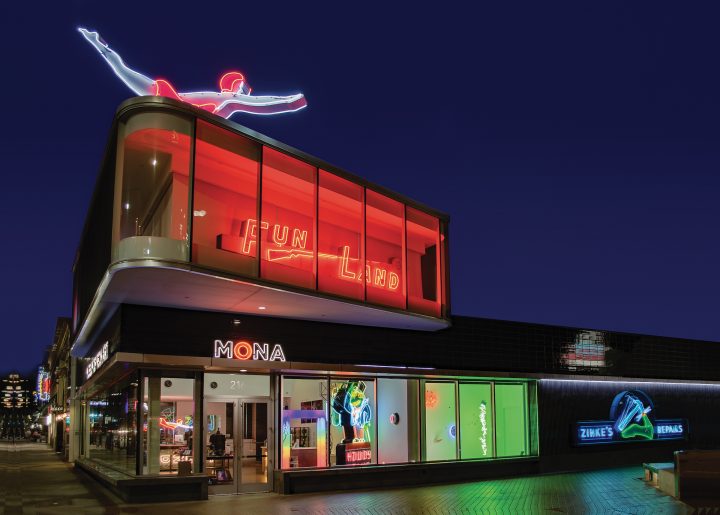
In just 48 hours, some 80,000 people watched a short video of artist Roxy Rose twisting hot glass rods into intricate artwork. The 34-second clip is by no means the most successful video posted to TikTok by the Museum of Neon Art — a small museum in Glendale, California — but it has already amassed far more viewers than the museum would expect to see within its walls over the course of an entire year. It’s a similar story in Belo Horizonte, Brazil: thousands more follow the lighthearted tutorials and informative clips produced by staff at the Museu dos Brinquedos (the Museum of Toys) than have likely ever set foot in the small family museum born out of the extensive and eclectic toy collection of Luiza de Azevedo Meyer.
The world’s biggest museums — both in terms of name recognition and sheer physical scale — are heading to TikTok in a bid to draw youth interest and raise their outreach efforts in the wake of recent waves of pandemic-prompted museum closures. Mikhail Piotrovsky, director of the State Hermitage Museum, outlined a comprehensive plan to bring Russia’s largest and most celebrated museum onto the app in his annual address last December. Similarly, if murmurs in the French press are to be believed, the Louvre has been in talks with the video-sharing platform, seeking to share its immense collection of world-famous artworks on phone screens worldwide.
But although major museums worldwide are taking on TikTok, it’s the less-renowned museums that are winning big.
On the ever-growing video-sharing platform, two museums really steal the show: the Sacramento History Museum, with an impressive 1.5 million followers, and the Black Country Living Museum, with 1.1 million followers. Thanks to their innovative programming, these two museums — regional favorites, but hardly globally-renowned bucket list items — far outpace more famous world institutions on the platform, including the Prado Museum and the Château de Versailles.
The majority of the Sacramento History Museum’s many loyal viewers have been drawn in by videos of octogenarian volunteer docent Howard Hatch using the institution’s precious antique printing presses, sharing fun facts, and showing off the intense labor that went into producing historic newspapers. Meanwhile, the Black Country Living Museum — located in Dudley, England — has drawn major attention through re-enacted scenes of everyday life in the past, offering everything from a 1920s Grandad dispensing life advice to a Victorian woman ranting about poor quality bread.

Museums can sometimes have a reputation for being distant and static — scattered with “Do Not Touch” signs and often incomprehensible plaques. On TikTok, however, innovative institutions have seen great success through bringing their collections and knowledge base to life by leaning into all opportunities to bring lighthearted humor to serious history and culture. While major institutions, with certain notable exceptions, have often attempted to maintain an online presence as carefully curated as their gallery walls, success on TikTok favors casual production and — above all — those who aren’t afraid to make fun of themselves, or of their museum’s precious collections.
The Museum of Neon Art — though not quite reaching the stunning heights of the Sacramento History Museum or the Black Country Living Museum — boasts a respectable 24,000 followers, putting it roughly on par with the likes of Paris’s Musée D’Orsay. Its TikTok strategy takes a similarly hands-on approach to artefacts, showing how neon art can be made and analyzed, and doesn’t shy away from unrefined reality: One video, labelled “some gross stuff we found while we were consolidating warehouses,” even includes a wrinkled, old cat corpse.
For smaller museums like these, investing time and money into TikTok can really pay off. Indeed, some have already seen TikTok fans translate into real-life visitors. Corrie Siegel, Director of the Museum of Neon Art, a self-described “obsessive documentor,” and the leader of its TikTok strategy, in emailed correspondence with me says: “The majority of our visitors say they have found us on Instagram and TikTok.” Anecdotally, she adds, some have even “travelled across the country” just to pay a visit, having discovered the museum’s unique multicolored wonders online. Jared Jones, Digital Content Coordinator at the Sacramento History Museum, also told me a similar story: “There have been a lot of visitors coming to our museum because of TikTok!”
From neon signage to antique printing presses and old toy collections, TikTok is bringing niche — and often under-recognized — cultural treasures to the forefront. Smaller museums are drawing in viewers by pushing the limits of cultural programming, perhaps with less care for preserving prestigious reputations and plenty of unexpected surprises to attract new audiences.
0 Commentaires